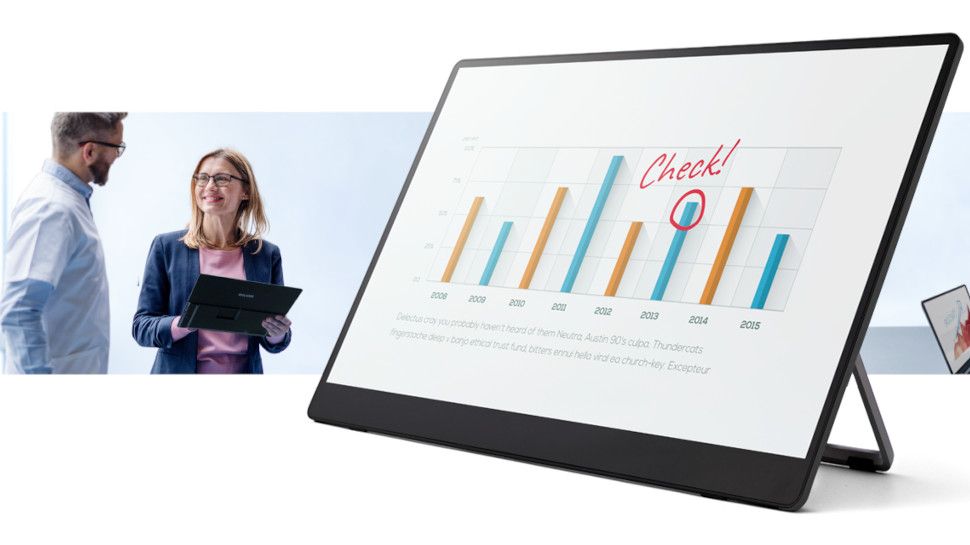
Ricoh has unveiled a transportable monitor that appears to face out from a really crowded market thanks to 1 distinctive promoting level – it will probably mirror content material from one other gadget (pill, smartphone, desktop PC or laptop computer) wirelessly.
In accordance with Nikkei Asia (opens in new tab), Ricoh teamed up with a Tokyo-based startup fashioned by ex-Sharp workers and referred to as Crew S to develop a know-how referred to as SSE (Sensible Streaming Engine) which seems to be a two-way model of Miracast with a latency of 100ms, sufficient for day-to-day productiveness duties (video conferencing, shopping, workplace work) however most likely not low sufficient for gaming.
The 150BW transportable monitor turns into an interactive show just like a typical pill with a 15.6-inch diagonal and weighs solely 715 grams. There’s no want for additional apps because the pill syncs straight with the smartphone (we’re not sure as as to if it’s display mirroring and if it may be used with a locked gadget).
The monitor doesn’t come low-cost although at round $690 in Japan, making it a possible candidate for these on the lookout for a enterprise monitor on the transfer.
These screens might basically substitute smartphones
Bodily, the gadget has an enormous bezel with a full HD OLED panel, a kickstand and a built-in 3.74Ah battery. There’s additionally a pair of audio system and two USB connectors, as customers can join through a USB Kind-C cable. As much as 5 shows will be linked to a single gadget on the similar time (though one can be touch-enabled).
The Ricoh 150BW can also be suitable with lively stylus pens, making it excellent for graphic designers or certainly anybody that desires to digitize handwritten enter. The Nikkei report concludes with the very optimistic hope that “Additional improvement of the know-how, coupled with high-speed 5G networks, might pave the way in which for these screens to basically substitute smartphones.”
Crew S is seemingly engaged on the idea of a digital smartphone within the cloud for later this 12 months, one thing that sounds puzzling. Isn’t this – in essence – a pill model of a thin-client with a digital desktop positioned in a knowledge heart someplace?
Past that lofty ambition although is the true risk that Crew S might license the know-how to pill makers like Huawei or Samsung and different transportable monitor producers (LG, Viewsonic) in order that they flip tablets into transportable screens and vice versa, with out the necessity for any third get together purposes.
